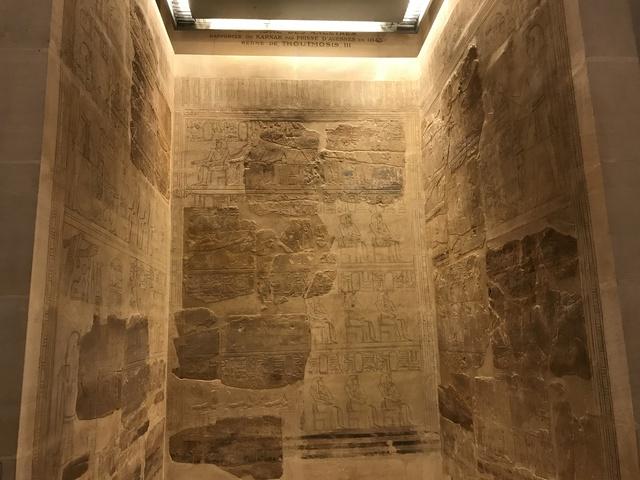The room of the ancestors

The room of the ancestors is a dependency of the party hall of the Jubilee temple built by King Tutmosis III to celebrate his first 'Party'. The 'camera' is part of the work begun by the king in the Karnak temple precincts in Luxor. It carries on its walls the list of sixty-one kings, known as the royal table of Karnak or list of kings of Karnak of the Ancient Egyptian Empire.
The east and west walls are decorated with representations of the king making offerings to the kings who preceded it. In front of him, sixty-one kings, grouped into dynasties, are distributed on the three walls of the east, south and west of the room. Only 39 names are legible. The upper room of the eastern and southern walls includes all the dynasties of the Old Kingdom, although some kings are missing, as are the kings of the eleventh and seventeenth dynasties.
The story of how this work came to France is unique and shows what was the persecution of millenary objects at the time. In 1843 Karl Richard Lepsius led a German expedition that ascended the Nile to Karnak to take over the 'camera' on behalf of the Berlin Museum and transport it to Germany. The French explorer and archaeologist Émile Prisse d'Avesnes, in addition to forbidding the Egyptian authorities to take it away, dismantled the blocks of the 'chamber' at night in order to repatriate them to France. The Frenchman would declare at that time: 'In Egypt, already so impoverished by the devastating Muslims and European speculators, a learned society has descended as an invasion of barbarians to carry what little remains of the admirable Egyptian monuments. Outraged by all these devastations that I can not resist, I have decided to request a mission to avoid part of this debacle in France.'
After rearming the decorations by hand, he hands over the 'camera' to the Cabinet of the National Library Medal. In 1922, the Louvre recovered the blocks and restored the room.
© Tourblink